 Into the Garden With Charles by Clyde Phillip Wachsberger (Farrar, Straus, and Giroux, $28)
Into the Garden With Charles by Clyde Phillip Wachsberger (Farrar, Straus, and Giroux, $28)
A sweet and inspiring story about art, love, and gardening, Into the Garden With Charles is set against around the author's noteworthy garden outside his 300-year-old house in the hamlet of Orient on Long Island. In the memoir we meet Wachsberger, a boy in New York City who dreams of storybook gardens and grows into a a middle-aged gay man who has given up on finding the one. Then he meets Charles, an avid gardener, and the two will become life partners and create the wildly gorgeous garden of their dreams. Wachsberger's published books include Daffodil, Rose, Of Leaf and Flower, and Stories and Poems for Gardeners, which he edited with his partner, Charles Dean, and for which his illustrations won the Garden Writers Association award for best book illustration. Into the Garden With Charles, in fact,includes 14 full-color illustrations of the author's paintings, which give this sweet little story the feel of an antique children's book, fitting for a memoir about growing up and falling in love in a storybook setting. (FSGbooks.com)
 Journey to the Abyss: The Diaries of Count Harry Kessler, 1880-1918 by Harry Kessler, edited by Laird M. Easton (Alfred A. Knopf, $45)
Journey to the Abyss: The Diaries of Count Harry Kessler, 1880-1918 by Harry Kessler, edited by Laird M. Easton (Alfred A. Knopf, $45)
German Count Harry Kessler (1868-1937) was born into wealth and lived a life of privilege during the belle epoque, when Kessler was a socialite, book publisher, and cofounder of the avant-garde publication Pan. Kessler rubbed elbows with many of the era's leading artists, performers and writers and his diaries are rich with gossip about those who shaped the times. Kessler was also a prolific journal writer, producing so many diary entries between 1880 and 1918 that the 877 pages included in Journey to the Abyss represent -- according to Laird M. Easton, the editor and translator -- only abou a quarter of his writings. The diaries, which had previously been thought lost, were discovered in 1987 in a safe that had been rented 50 years earlier.
Kessler, who never married, wrote positively about homosexuality, predicting in 1907 that, in a decade or two, "the movement" would achieve "a kind of sexual revolution through which Germany will very quickly ... overtake the lead that France and England have had."
Unlike Kessler's later diaries (1918-1937, previously published as Berlin in Lights), these entries reveal a man who fails to see the dangerous political aspirations rising in Germany and who still shares his nation's anti-Semitism. The elder Kessler lost his fortune, left Germany forever in 1933, and condemned that year's "abominable Jewish boycott." Kessler died in 1937 in his sister's home in France. (KnopfDoubleday.com)
 Rub Out the Words: The Letters of William S. Burroughs 1959-1974 by William S. Burroughs, edited by Bill Morgan (Ecco, $35)
Rub Out the Words: The Letters of William S. Burroughs 1959-1974 by William S. Burroughs, edited by Bill Morgan (Ecco, $35)
In this sequel to an earlier volume of William S. Burroughs's letters (1945-1959), the bulk of the 300 letters collected in Rub Out the Words are directed to Allen Ginsberg, beginning with 1959's classic missive: "Dear Allen, Thanks a million for the mescaline."
While drug use is certainly an important element in their relationship, the two men also shared a love for the creation of fine literature -- but Burroughs's letters to Ginsberg also delve into mundane concerns about doctors and jobs. Readers hoping to learn more about the death of Burroughs's wife, Joan Vollmer -- whom the writer killed in an alcohol-fueled barroom game of William Tell -- and the controversial obscenity trial over Burroughs's famous novel Naked Lunch will be disappointed. If Burroughs wrote about those issues, those letters aren't represented here. Instead, while the Massachusetts Supreme Court decided the fate of Naked Lunch, Burroughs seemed more concerned that Grove Press was mishandling his royalties.
But what it lacks in new revelations about Burroughs's personal life this collection more than makes up for in the sheer joy of devouring Burroughs's command of language and ability to imbue his letters (including riffs on the creative process) with the same literary genius that seared his Beat poems into our collective consciousness. And you'll understand why, 15 years after his death, there's renewed interest from Hollywood in Burroughs and the Beat movement he personified. (HarperCollins.com)
 Kasher in the Rye: The True Tale of a White Boy from Oakland Who Became a Drug Addict, Criminal, Mental Patient, and Then Turned 16 by Moshe Kasher (Grand Central Publishing, $24.99)
Kasher in the Rye: The True Tale of a White Boy from Oakland Who Became a Drug Addict, Criminal, Mental Patient, and Then Turned 16 by Moshe Kasher (Grand Central Publishing, $24.99)
Thirty-two-year-old Moshe Kasher is a Jewish comedian who has appeared on television shows including Late Night With Jimmy Fallon, Shameless, Chelsea Lately and Whitney. In his hilarious memoir, Kasher in the Rye, he chronicles a troubled San Francisco childhood, spent in and out of psychoanalysis, mental institutions, drug trips, and rehab. The son of two deaf parents, Kasher was sent to anger therapy when he was just 4 years old, the start of a long journey toward mental health with detours when his self medicating got out of hand. Although he keeps his dark humor throughout, Kasher does share some heartwarming moments as well, as when he signs to his mother while receiving his college diploma.
Although he's straight, Kasher has earned gay-adjacent cred by incorporating a queerish personality into his stand-up routines ("If at any point you do become offended, that's just you being a bitch"), Twitter posts ("If i have a son I will send him to the Boy Scouts so he can learn to tie a knot and to prevent gay people from tying the knot"), and interviews ("What is your least favorite question to answer? 'Why are you such a f****t?'"). (hachettebookgroup.com)
 Second Son by Ryan Sallans (Title Town Publishing, $16.95)
Second Son by Ryan Sallans (Title Town Publishing, $16.95)
A coming-of-age story by a transgender man tackles new territory, especially as Sallans (seen in the video below) interlinks his history as body-obsessed kid with an eating disorder that almost killed him. It's a traditional transition narrative but because Sallans is able to focus on very intimate issues that may related to his gender identity and the struggle to become the man he knew he should be, it transcends the ordinary and offers a fascinating look at a the life of a modern trans man. As Sallans says it took him 29 years to find himself, Second Son certainly could help others avoid that very long journey the author took. (TitleTownPublishing.com)
 Caravaggio: A Life Sacred and Profane by Andrew Graham-Dixon (W.W. Norton, $39.95)
Caravaggio: A Life Sacred and Profane by Andrew Graham-Dixon (W.W. Norton, $39.95)
Italian painter Michelangelo Merisi da Caravaggio was born in 1571. By the time he was 6 years old he had lost all of his male relatives to the bubonic plague, and he spent much of his youth on the streets, brawling with a gang of what one early biographer called "painters and swordsmen who lived by the motto nec spe, nec metu, 'without hope, without fear.'" In some way, Caravaggio never really escaped those roots: at 38, he was executed for killing a man.
These sparse facts were nearly all Andrew Graham-Dixon could uncover about the famous painter, even after extensive research and returning to the original Italian source material (mostly criminal records). It's that same dearth of biographical material that led two novelists (Peter Robb and Francine Prose) to previously offer fictional accounts of Caravaggio's personal life. But there remains another source of insight about the artist, the paintings he left behind. Understanding that artists cannot help but to reflect parts of themselves in their work, and knowing Caravaggio frequently utilized his own face in his work, Graham-Dixon interprets truths about the painter's life from the biblical scenes he was commissioned to paint.
In fact, Caravaggio seemed to have a particular need to incorporate the world he knew -- the squalid, violent world of Rome's underclass, populated with unwashed prostitutes, pimps, criminals, beggars, hustlers, and street urchins -- into his portrayals of iconic Bible scenes.
Needless to say, not all of his contemporaries were pleased with Caravaggio's penchant for painting the Madonna with the face of a prostitute or depicting bowls of fruit as rotten and worm-infested, and, during his life, his work was often disparaged. It wasn't until the latter half of the 20th century that Caravaggio's work finally received the recognition it deserved.
Caravaggio's homosexuality is distilled from the numerous naked boys he painted as angels and saints. They are often seated on disheveled beds, explicitly offering (rotten) fruit, wine, and music while implicitly offering their own fruits for the plucking. Graham-Dixon calls the pudginess of these young, feminine boys "the hormonal side effects of castration."
In this illustrated biography (out in hardback now, in paperback in November), Graham-Dixon shows us a painter who may have lived 500 years ago but was in many ways a thoroughly modern artist, willing to portray both the ugliness of superficial beauty and the beauty in gritty, fetid realism. (wwnorton.com)
 The Man Who Quit Money by Mark Sundeen (Riverhead, $15)
The Man Who Quit Money by Mark Sundeen (Riverhead, $15)
Daniel Suelo does not pay taxes, or accept food stamps or welfare. He doesn't have a "job" but he works a great deal -- never accepting money for his contributions. He lives free in the caves of the Utah canyonlands, foraging wild onions and berries, scavenging garbageboms, and grilling up road kill. Why? Suelo gave up money over a decade ago. The story of how this 50-year-old gay man came to live in such a sustainable way, and the spiritual morality that still guides both his environmentalism and his beliefs about volunteerism, is a fascinating page-turner and a veritible Walden for the 21st century. Beautifully subversive and thought-provoking, Suelo's story is really about universal desires and how you strip away what's all artifice and you find what's really important in life, especially at a time when politicians are still debating climate change and sustainable energies. Expect to see this one become a classic environmental text. (Amazon.com)
 David Hockney: The Biography by Christopher Simon Sykes (Nan A. Talese, $35)
David Hockney: The Biography by Christopher Simon Sykes (Nan A. Talese, $35)
Born in England in 1937, David Hockney didn't struggle as an artist, but did struggle with his sexuality. Still, when he found a supportive environment at college, he immediately came out and his art reflected his new identity as a "queer" and "unorthodox lover." In 1961, Hockney traveled to New York and was so moved by both the art and gay scenes that he remained in the U.S., although he was soon drawn to Southern California's endless sun, pools, beaches, and tan boys. Hockney was immortalized in Jack Hazan's biographical film A Bigger Splash, which -- much to Hockney's chagrin -- ended up focusing less on his art and more on the breakup of his five-year relationship with his (much) younger lover, Peter Schlesinger.
This biography of Hockney is full of insiders' anecdotes (the author has known his subject since the 1960s) and includes color reprints of many of his most famous works (including The Rake's Progress and his internationally recognized paintings of Los Angeles pools) as well as photos of Hockney and his lovers. But the book is marred by ending while the Hockney is still in his 30s, with half a career to come. Likely it was rushed to time its publication with the major Hockney retrospective at the British Royal Academy, but many readers will want to continue Hockney's journey a lot longer than Sykes did. (Powells.com)
Mind Your Own Life: The Journey Back to Love by Aaron Anson (Balboa Press, $19.95)
Aaron Anson is a "largely self-taught" inspirational speaker, consultant, and "New-Thought coach" who chronicles his struggle to overcome his conservative political and religious indoctrination as a devout Christian Southerner and embrace his gay sexuality in this memoir that argues we don't have to be held captive by others' expectations. Certainly a good lesson to embrace. (BalboaPress.com)
 Finding Your Force: A Journey to Love by Alicia Anabel Santos (CreateSpace, $19.99)
Finding Your Force: A Journey to Love by Alicia Anabel Santos (CreateSpace, $19.99)
In this self-published but well executed memoir, written in the form of love letter to her daughter, the Dominican-American playwright, director, and producer of the one-woman show I Was Born, Alicia Santos, describes surviving rape and coming out as a lesbian. (CreateSpace.com)
Butterfly in the Typewriter: The Tragic Life of John Kennedy Toole and the Remarkable Story of A Confederacy of Dunces by Cory MacLauchlin (Da Capo, $26.00)
Chosen as one of Publishers Weekly's Best Summer Reads of 2012, Cory MacLauchlin's Butterfly in the Typewriter is a thoroughly researched, well-documented, and highly objective biography of John Kennedy Toole, the author of A Confederacy of Dunces.
After Toole's masterpiece was was rejected by publishers he suffered a mental breakdown and took off on a two-month journey across the United States. He returned to his beloved hometown of New Orleans before committing suicide on the side of a road outside nearby Biloxi, Miss., by hooking a hose up to his car's exhaust pipe. Twelve years later his manuscript was finally published -- to critical acclaim. It went on to win a Pulitzer Prize.
MacLauchlin does this tragic story justice, producing a gripping biography worth reading. The only criticism stems from what at first seems a compliment: as Publishers Weekly says, "MacLauchlin does an admirable job distinguishing facts from speculation." But one of those "speculations" has been that Toole was gay or at least bi-curious. To such talk, MacLauchlin replies, "He may have questioned his sexuality, I don't know. I found nothing substantive to indicate he was homosexual. And in the absence of such evidence I think it is irresponsible to speculate."
Not knowing what would constitute substantive indication of someone's homosexual orientation, readers can choose to accept MacLauchlin's determination. And because he chose not to speculate, Butterfly includes not the slightest suggestion that Toole was anything but straight. Is that the truth? Maybe not, but it's a good story nonetheless. (DaCapoPress.com)
 A Fiery Soul: The Life and Theatrical Times of John Hirsch by Andrew J. Wilson and Fraidie Martz (Vehicule Press $22)
A Fiery Soul: The Life and Theatrical Times of John Hirsch by Andrew J. Wilson and Fraidie Martz (Vehicule Press $22)
In 1947, when John Hirsch, a Jewish Hungarian orphaned by the Holocaust, first arrived in Winnipeg, Canada, he was just 17 years old and spoke no English. A decade later, he cofounded the Manitoba Theatre Centre, which became a model for regional theaters across North America. He later spent four years at the Canadian Broadcasting Corp. as head of English television drama and then served as artistic director at the Stratford Shakespeare Festival from 1981 to 1985. A gay man known for his fiery temper and budget-blowing sets, Hirsh died of AIDS complications in 1989.
Hirsch's story is intrinsically Canadian, and the authors' not being Canadian themselves may have doomed the biography to being less than it could be (as did, one could argue, their stumbling upon his life story while researching war orphans). That lack of intimate knowledge of the subject, his homeland, and his work resulted in a flawed book with a number of factual errors and notable exclusions. Still, it remains a fair introduction to the life of a fascinating and influential gay man. A Fiery Soul includes black-and-white photos and covers both Hirsch's professional and personal life. (VehiculePress.com)
 My Germany: A Jewish Writer Returns to the World His Parents Escaped by Lev Raphael (Terrace Books, $26.95)
My Germany: A Jewish Writer Returns to the World His Parents Escaped by Lev Raphael (Terrace Books, $26.95)
Lev Raphael's parents survived the Holocaust and he'd sworn never to set foot in Germany, the land they escaped. Having published 19 books of fiction and prose, Raphael is one of the most prolific writers about the experiences of second-generation Holocaust survivors. When a book tour for his 2003 novel The German Money took him to Germany, he had to face his mixed emotions with visiting locations where his family had lived and died. Raphael's experience is all the more intense as it corresponds with his coming out as a gay man.
This book is part family history and retelling of his mother's experiences in a slave labor camp and part recollections of a childhood where his parents didn't speak of their life-changing experiences. A classic travelogue meets a coming-out story, My Germany takes readers along on Raphael's journey of growth and self-discovery and offers reconciliation with the past. (UWPress.Wisc.edu)
Derailed: A Memoir by Jerry Tanner (Balboa Press, $17.99)
Jerry Tanner started a $20 million health care company from the ground up. He then took over a bankrupt pharmacy and turned it into a $30 million company within one year. Then when the sons of an evangelical pastor alleged sexual assault, all that changed. In Derailed: A Memoir, Tanner describes how his life was turned upside down when reactions to his sexual orientation morphed into false misconduct allegations and finally a criminal indictment. "American society was founded on the principles of equality and tolerance," says Tanner. "I was a highly successful businessman and I was brought down by mere allegations of misconduct, plus being gay." An incisive coming-of-age story and a reminder that the legal system isn't always fair when you're on the wrong side of what your commuity considers morally right. (BalboaPress.com)
 Why Be Happy When You Could Be Normal? by Jeanette Winterson (Grove Press, $25)
Why Be Happy When You Could Be Normal? by Jeanette Winterson (Grove Press, $25)
This long-awaited memoir by the lesbian author of Oranges Are Not the Only Fruit (which became a film, see video below) covers much of the same material as that autobiographical nove, but delves even deeper into her relationship with a religiously zealous adoptive mother who treated her like the spawn of Satan.
"Mrs. Winterson," as Winterson calls her mother in the memoir, was an enormous British woman and "flamboyant depressive... who kept a revolver in the duster drawer, and the bullets in a tin of Pledge." The elder Winterson waited wit h baited anticipation for an imminent biblical apocalypse that would strike down her godless neighbors and deliver her into the rapture her piety must have surely earned her. As must have raising Jeanette and doing her best to wrest the disobedient child into a god-fearing Christian. "The Devil led us to the wrong crib," Mrs. Winterson liked to say. She employed all of her resources in her fight against Satan, sparing neither rod nor scripture. But nothing -- not beatings, shutting the child "in a coal hole," nor routinely locking her out of the house all night -- seemed to work.
Opposed as she was to all forms of intimacy, including [hetero]sexual intercourse, it came as no surprise that Mrs. Winterson did not take kindly to learning of her daughter's lesbianism. But, the author writes, the ensuing three-day exorcism failed to expel her demons. That Winterson survived the torture of her childhood is astonishing. That she did so with her wit and mental faculties intact is inspirational. "The one good thing about being shut in a coal hole is that it prompts reflection," she jokes. In that reflection, Winterson came to recognize that her mother was both her kryptonite and her steel: "What we notice in stories is the nearness of the wound to the gift. My mother was in charge of language."
The author was forbidden to read secular books, but Mrs. Winterson read aloud from the Bible every night and, once a week, would send her daughter to the public library to check out murder mysteries (the one vice to which Mrs. Winterson was addicted). At the library, Winterson discovered a means of escape: "A book is a door. You open it. You step through."
After Mrs. Winterson discovered and destroyed the author's secret stash of paperbacks, Jeanette began creating her own stories inside her head. So, before you condemn the cruel Mrs. Winterson, consider that we may owe her those finely crafted stories that have filled the pages of Jeanette Winterson's 16novels. (GroveAtlantic.com)
 A Dangerous Woman: The Life, Loves, and Scandals of Adah Isaacs Menken, 1835-1868, America's Original Superstar by Michael Foster and Barbara Foster (Lyons Press, $24.95)
A Dangerous Woman: The Life, Loves, and Scandals of Adah Isaacs Menken, 1835-1868, America's Original Superstar by Michael Foster and Barbara Foster (Lyons Press, $24.95)
Adah Isaacs Menken (June 15,1835-August 10,1868) was born into a mixed-race Jewish Creole family in antebellum New Orleans. She went on to become a global superstar, internationally known as the "Naked Lady," for "baring all" on stage and film (although in reality she wore a flesh-colored bodystuit).
Remarkably prescient about creating a pre-celebrity public brand, she was adept at utilizing the newly invented mediums of photography and the daily newspaper to promote her performances and herself, allowing her personal life to not only become public but dominate the front-pages of scandal sheets. Menken had five husbands and became the most famous, highly paid actress in the world at the time, working in New York, San Francisco, London, and Paris -- all of this before her mysterious, sudden death at 33. Her influence on artists and literary giants of the time was reflected in the presence of the famous poet Longfellow at her bedside. He composed a farewell love song in her honor.
Like her friend George Sand, Menken "adopted what were considered to be men's dress and habits. They wore pants in public...They smoked cigarettes and sometimes cigars. They chose their careers, earned lots of money, and played a significant part in the events of the day."
But, the Fosters insist, "The lesbian relationship promoted by an American biographer of Sand, Noel Gerson (alias Samuel Edwards) is clumsy fiction. Gerson is the same hack who faked Menken's licentious Havana diary." Although Sand and Menken were photographed with Sand's arm around Menken, and Sand gave Menken's son her last name, the authors insist the two women were just friends. They point to the 30-year age difference and say by that time Sand, "her beauty faded, looked like an older woman," whose face was described as "'mummified.'"
Still, A Dangerous Woman acknowledges Menken's bisexuality and lesbian sexual encounters. The book is an engrossing look at a fully modern woman who presaged everything from femme fatales like Marilyn Monroe to today's international celebrities and our fascination with the details of their lives. (LyonsPress.com)
 An Unquenchable Thirst: Following Mother Teresa in Search of Love, Service, and an Authentic Life by Mary Johnson (Spiegel & Grau, $27)
An Unquenchable Thirst: Following Mother Teresa in Search of Love, Service, and an Authentic Life by Mary Johnson (Spiegel & Grau, $27)
Mary Johnson spent two decades as a nun working closely with Mother Teresa, and her memoir provides a frank, unflinching account of that experience and the difficulties she faced. A Texan who was inspired by Mother Teresa, Johnson joined the Missionaries of Charities to help the poor. But her superiors decided her skills would be better employed in a managerial track, so they pulled her from the field and Johnson spent most of her years as a nun in and around Rome doing paperwork and teaching.
That role put her in a position to witness the political machinations and less-than-Christlike behavior of her superiors, and she doesn't hold back on naming names (while using pseudonyms for innocent nuns and priests). Johnson is even willing to bypass the standard portrait of Mother Teresa as a "living saint" and provide a more nuanced description of a flesh-and-blood woman who could be something of a control freak, who deliberately pursued sainthood, and who strictly adhered to biblical and papal edicts even when those teachings kept other women subjugated and powerless.
But it isn't the failings of others that eventually drives Johnson from the Missionaries of Charity, it's her "unquenchable thirst" for emotional and physical intimacy. The order prohibits physical contact, forbidding nuns to even offer each other a friendly hug; but Johnson can't stop herself from going much further, developing sexual relationships with other nuns and having an affair with a priest. Eventually she leaves the order in 1997. The book wraps with a short epilogue that brings readers from 1997 to 2007, when Johnson visits some of the sisters and priests she knew during her years of service. We learn she's married (to a man), that she no longer attends church, that she teaches creative writing and has found a community with women writers, but we're left hoping for a follow-up memoir that details the decade she's glossed over. Hopefully it will be as engaging, frank, and thoughtful as this one. (RandomHouse.com/spiegelandgrau)
The Secret Diaries of Miss Anne Lister, edited by Helena Whitbread (Virago, $14.95)
Previously published in 1988, The Secret Diaries of Miss Anne Lister was re-released to correspond with the airing of BBC's TV movie of the same name. Born in the 1790s, Anne Lister lived during an era when women needed to be attached to a man to survive economically, but she forged her own way. An independent woman, Lister was a British landowner, industrialist, and lesbian who established a liaison with another woman that left them free to live on their own terms. Lister's diaries had been written in a complex code, which was finally cracked by academic Helena Whitbread, who then released the transcribed diaries in two volumes, I Know My Heart (1791-1840) and No Priest But Love (1824-1826). No matter what form they come in, Lister's diaries offer a fascinating look at the intimate lives of 19th-century lesbians and pioneers in the struggle for women's rights and independence. (Virago.co.uk)
 Every Step You Take: A Memoir by Jock Soto (Harper Collins, $24.99)
Every Step You Take: A Memoir by Jock Soto (Harper Collins, $24.99)
Jock Soto is an acclaimed gay dancer who rose from nowhere to ballet fame and for two decades (1985-2005) was a principal dancer for the New York City Ballet. Born to a Navajo mother and a Puerto Rican father, Soto learned Native dancing as a child, but it wasn't until he was 10 that he first saw -- and fell in love with -- ballet. Yet, by his mid-teens, he was living on his own in New York City and dancing with the New York City Ballet.
In Every Step You Take, Soto, now teaching at the School of American Ballet, writes about his career, his creative process, his Native American heritage, and his gay identity. Although he isn't as talented a writer as he is a dancer, his overreliance on cliches doesn't prevent this from being an enjoyable and inspirational read. (HarperCollins.com)
 Jim Flint: The Boy From Peoria by Tracy Baim and Owen Keehnen (Prairie Avenue Productions, $29.95)
Jim Flint: The Boy From Peoria by Tracy Baim and Owen Keehnen (Prairie Avenue Productions, $29.95)
Jim Flint is a gay Chicagoan best known as founder of the Continental Pageant System. After a stint in the Navy, Flint opened the drag club Baton Show Lounge and became known as Felicia, the baton-twirling, roller-skating queen of Chicago. He went on to own the Redoubt leather bar, head the Chicago Knights motorcycle club, found the Windy City Athletic Association, and run (in 1987) for the Cook County Board of Commissioners as an openly gay candidate.
This is the second biography of an icon from Chicago's LGBT community authored by Tracy Baim and Owen Keehnen of the Windy City Times (following Leatherman: The Legend of Chuck Renslow), a duo who seem to be singlehandedly documenting Chicago's queer history, one book at a time.
The 500-plus pages include 400 photographs and places Flint's life story within the broader historical context of LGBT Chicago. "It was an opportunity to capture a larger history," explains Keehnen. "With Jim, that story includes the trans world, gay sports world, political world, activist world, bar culture, [and] pageantry world." (Amazon.com)
August Farewell: The Last 16 Days of a 33-Year-Romance by David G. Hallman (Rising Star/iUniverse, $16.95)
After his partner of 33 years was diagnosed with stage 4 pancreatic cancer, David G. Hallman only had two weeks to say a final farewell to the love of his life. In this moving memoir, Hallman recalls those painful last days and shares anecdotes from the three decades they spent together, traveling internationally and running a bread-and-breakfast in Canada. David Hallman has written six nonfiction books and is the author of the just-released novel Searching For Gilead, which reads as a thinly veiled memoir of his and his partner's time working with the World Council of Churches. This video is all the enticement you need to read both of these very worthy books. (iUniverse.com)
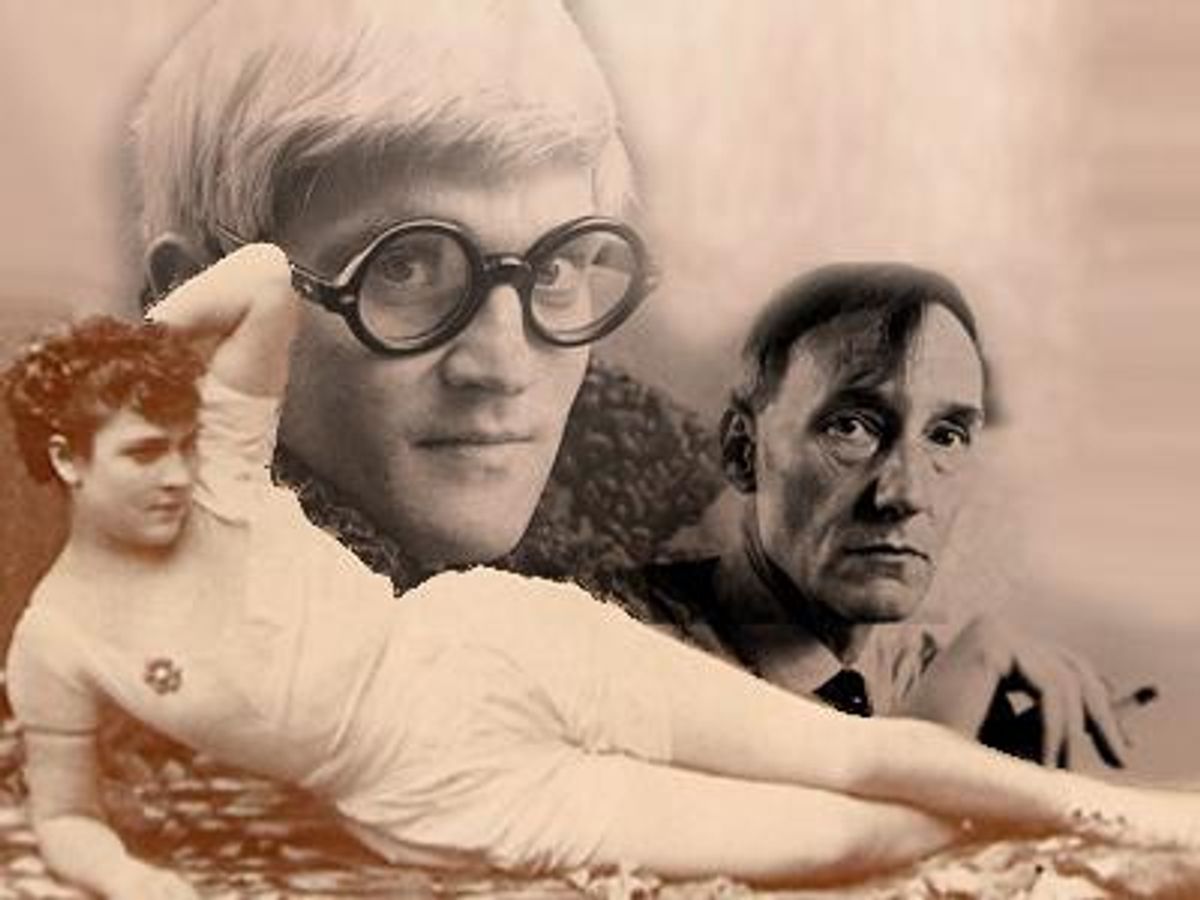

 Into the Garden With Charles by Clyde Phillip Wachsberger (Farrar, Straus, and Giroux, $28)
Into the Garden With Charles by Clyde Phillip Wachsberger (Farrar, Straus, and Giroux, $28) Journey to the Abyss: The Diaries of Count Harry Kessler, 1880-1918 by Harry Kessler, edited by Laird M. Easton (Alfred A. Knopf, $45)
Journey to the Abyss: The Diaries of Count Harry Kessler, 1880-1918 by Harry Kessler, edited by Laird M. Easton (Alfred A. Knopf, $45) Rub Out the Words: The Letters of William S. Burroughs 1959-1974 by William S. Burroughs, edited by Bill Morgan (Ecco, $35)
Rub Out the Words: The Letters of William S. Burroughs 1959-1974 by William S. Burroughs, edited by Bill Morgan (Ecco, $35) Kasher in the Rye: The True Tale of a White Boy from Oakland Who Became a Drug Addict, Criminal, Mental Patient, and Then Turned 16 by Moshe Kasher (Grand Central Publishing, $24.99)
Kasher in the Rye: The True Tale of a White Boy from Oakland Who Became a Drug Addict, Criminal, Mental Patient, and Then Turned 16 by Moshe Kasher (Grand Central Publishing, $24.99) Second Son by Ryan Sallans (Title Town Publishing, $16.95)
Second Son by Ryan Sallans (Title Town Publishing, $16.95) Caravaggio: A Life Sacred and Profane by Andrew Graham-Dixon (W.W. Norton, $39.95)
Caravaggio: A Life Sacred and Profane by Andrew Graham-Dixon (W.W. Norton, $39.95) The Man Who Quit Money by Mark Sundeen (Riverhead, $15)
The Man Who Quit Money by Mark Sundeen (Riverhead, $15) David Hockney: The Biography by Christopher Simon Sykes (Nan A. Talese, $35)
David Hockney: The Biography by Christopher Simon Sykes (Nan A. Talese, $35) Finding Your Force: A Journey to Love by Alicia Anabel Santos (CreateSpace, $19.99)
Finding Your Force: A Journey to Love by Alicia Anabel Santos (CreateSpace, $19.99) A Fiery Soul: The Life and Theatrical Times of John Hirsch by Andrew J. Wilson and Fraidie Martz (Vehicule Press $22)
A Fiery Soul: The Life and Theatrical Times of John Hirsch by Andrew J. Wilson and Fraidie Martz (Vehicule Press $22) My Germany: A Jewish Writer Returns to the World His Parents Escaped by Lev Raphael (Terrace Books, $26.95)
My Germany: A Jewish Writer Returns to the World His Parents Escaped by Lev Raphael (Terrace Books, $26.95) Why Be Happy When You Could Be Normal? by Jeanette Winterson (Grove Press, $25)
Why Be Happy When You Could Be Normal? by Jeanette Winterson (Grove Press, $25) A Dangerous Woman: The Life, Loves, and Scandals of Adah Isaacs Menken, 1835-1868, America's Original Superstar by Michael Foster and Barbara Foster (Lyons Press, $24.95)
A Dangerous Woman: The Life, Loves, and Scandals of Adah Isaacs Menken, 1835-1868, America's Original Superstar by Michael Foster and Barbara Foster (Lyons Press, $24.95) An Unquenchable Thirst: Following Mother Teresa in Search of Love, Service, and an Authentic Life by Mary Johnson (Spiegel & Grau, $27)
An Unquenchable Thirst: Following Mother Teresa in Search of Love, Service, and an Authentic Life by Mary Johnson (Spiegel & Grau, $27) Every Step You Take: A Memoir by Jock Soto (Harper Collins, $24.99)
Every Step You Take: A Memoir by Jock Soto (Harper Collins, $24.99) Jim Flint: The Boy From Peoria by Tracy Baim and Owen Keehnen (Prairie Avenue Productions, $29.95)
Jim Flint: The Boy From Peoria by Tracy Baim and Owen Keehnen (Prairie Avenue Productions, $29.95)


































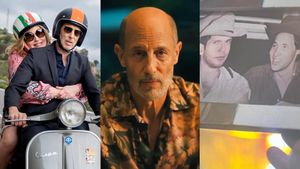



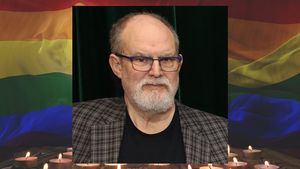









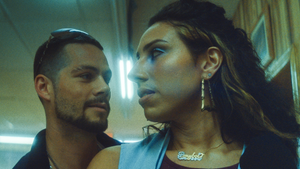

















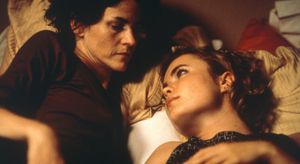


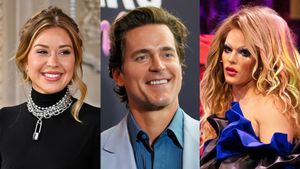
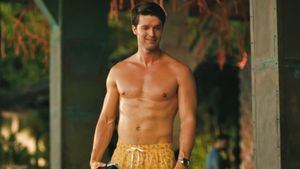




Here's our dream all-queer cast for 'The White Lotus' season 4